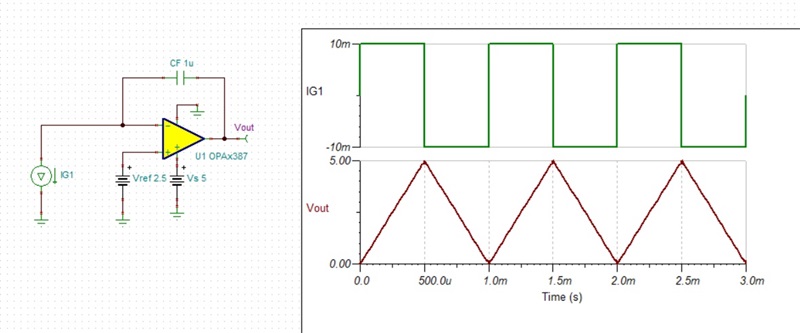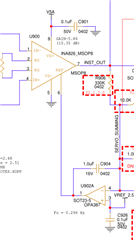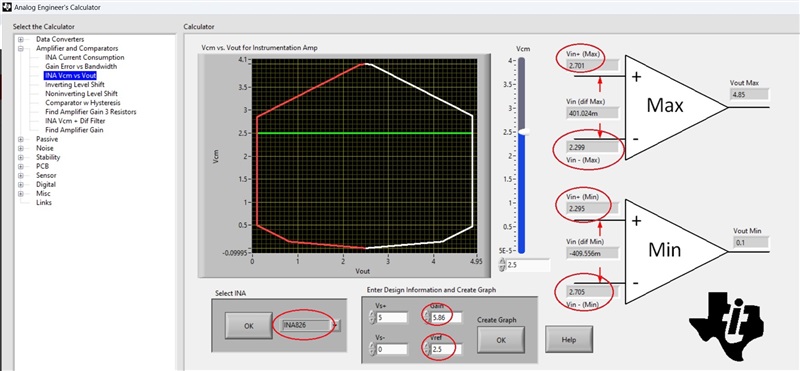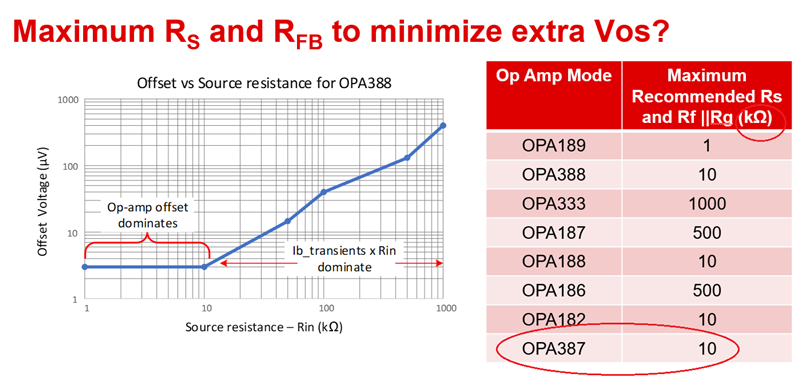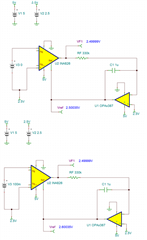Other Parts Discussed in Thread: TLV9061, TINA-TI, INA826, OPA392, OPA333, TLV9062
Tool/software:
I'm using the OPA387 as an integrator. It's part of a servo loop controlling the DC output of another amplifier. The power rails are +5 and GND. The non-inverting terminal is fixed at 2.5V. It correctly integrates up, but not down. In one example, it correctly integrated up to 4.15V. In the negative direction, it seems to have run out of room where it should have integrated down to 0.87V, but instead it stopped at 1.8V. Not even close. The + terminal sits at 2.5V and the - terminal is at 2.7V...so it's no longer running linear.
I replaced the OPA387 with TLV9061, and the integrator works as designed. There are some slight differences in the chip, but I don't see why the TLV9061 works and the OPA387 does not. Could it have something to do with amount of capacitance in the feedback loop? Maybe something else?
Please advise, thanks!


